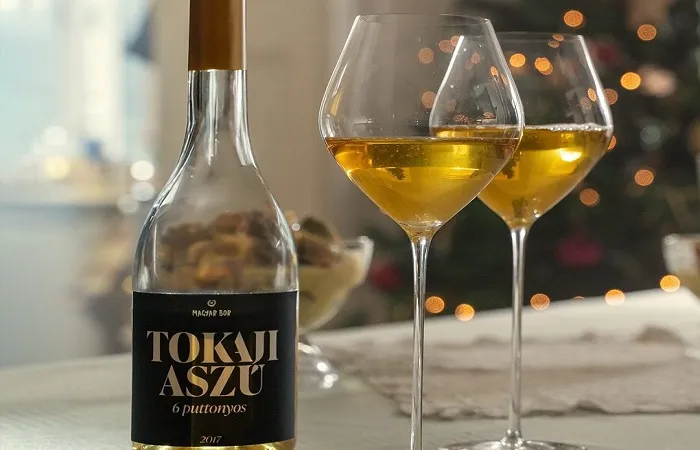Tokaji wine is one of the most renowned wines in the world, famed for its rich history, unique production process, and exceptional taste. Originating from the Tokaj wine region in northeastern Hungary, Tokaji has been celebrated for centuries as a symbol of quality and luxury. The Tokaji wine region’s designation as a UNESCO World Heritage site underscores its cultural and historical significance.
As a consumer, one of the first questions you may have when exploring Tokaji wine is whether it is a red or white wine. While many wines are immediately associated with either red or white, Tokaji is somewhat more complex. Its production process involves a specific set of grape varieties, harvesting methods, and aging practices that determine the final style of the wine. The region produces both white and red wines, but Tokaji is most famously associated with white wines, particularly dessert wines.
The Essence of Tokaji Wine: White or Red?
Tokaji wines are primarily known for their white wines, especially the famous Tokaji Aszú dessert wine, which is made from white grapes affected by noble rot. The grape varieties used for Tokaji wines include Furmint, Hárslevelü, and Muscat Blanc à Petits Grains, with Furmint being the dominant variety.
The production of Tokaji Aszú involves harvesting grapes that are left on the vine until they develop noble rot, which concentrates the sugars in the fruit, creating a complex, rich, and sweet wine. This process leads to wines that can be extremely sweet, with a deep amber color and an intense, fruity flavor. These wines are often enjoyed as dessert wines, served after a meal or paired with strong cheeses.
However, Tokaji is also capable of producing red wines, although they are far less common. The red wines produced in Tokaji are typically made from grape varieties such as Kadarka or Blauer Portugieser. These wines are typically lighter in style, offering vibrant fruit flavors, but they do not have the same historical significance or renown as the region’s white wines.
What Makes Tokaji Wine Unique?
The unique climate of the Tokaj region plays a significant role in the wine’s character. The combination of the warm summers and cool, foggy autumns creates the perfect conditions for noble rot, which is a key element in the production of the region’s famous Tokaji Aszú wines. The vineyards of Tokaji are often planted on volcanic soils, which lend the wines a distinct minerality that enhances their complexity and aging potential.
Understanding Tokaji Wine Price
Tokaji wine is often considered a luxury product due to its historic roots, the labor-intensive production methods, and its exceptional quality. As such, Tokaji wine prices can vary widely depending on the style, the vintage, and the producer. For example, Tokaji Aszú, especially those with higher puttonyos (sweetness levels), can be quite expensive, with prices ranging from $50 to over $500 per bottle for the rarest and highest-quality bottles.
Other Tokaji wines, such as the Tokaji Furmint or Tokaji dry whites, are generally more affordable, with prices starting at around $20 per bottle. For those looking for an introduction to Tokaji wines, these options provide a great starting point without breaking the bank. Tokaji wine price can vary based on the wine’s rarity and age, making it a good investment for collectors.
Exploring Tokaji Wine Calories
For those concerned with the nutritional content of wine, Tokaji wine calories can be an important factor to consider. Because Tokaji wines, particularly Tokaji Aszú, are made from very sweet grapes, they tend to have a higher calorie content compared to dry wines. On average, a 5-ounce serving of Tokaji Aszú contains approximately 150-200 calories, depending on the level of sweetness.
Other Tokaji wines, such as dry Tokaji Furmint, have fewer calories, typically around 120-130 per 5-ounce serving. It’s important to remember that the calorie content of Tokaji wine can vary based on factors such as alcohol content and sugar levels, so be sure to check the specific label for the most accurate information.
Conclusion
In conclusion, while Tokaji wine can come in both red and white varieties, the most famous and historically significant Tokaji wines are white. The region’s Tokaji Aszú wines are among the most celebrated dessert wines in the world, known for their sweetness, complexity, and aging potential. Whether you are enjoying a glass of Tokaji with dessert or exploring the dry whites of the region, Tokaji wine represents the pinnacle of Hungarian winemaking.
While the red wines of Tokaji exist, they do not carry the same fame or cultural importance as the white wines, especially the Tokaji Aszú. Nevertheless, the diversity within Tokaji wine production ensures that there is something for every wine lover, from the sweet and indulgent to the crisp and dry. With its rich history, complex flavors, and unique production methods, Tokaji wine will continue to be a prized choice for wine connoisseurs around the world.
You Might Be Interested In:


